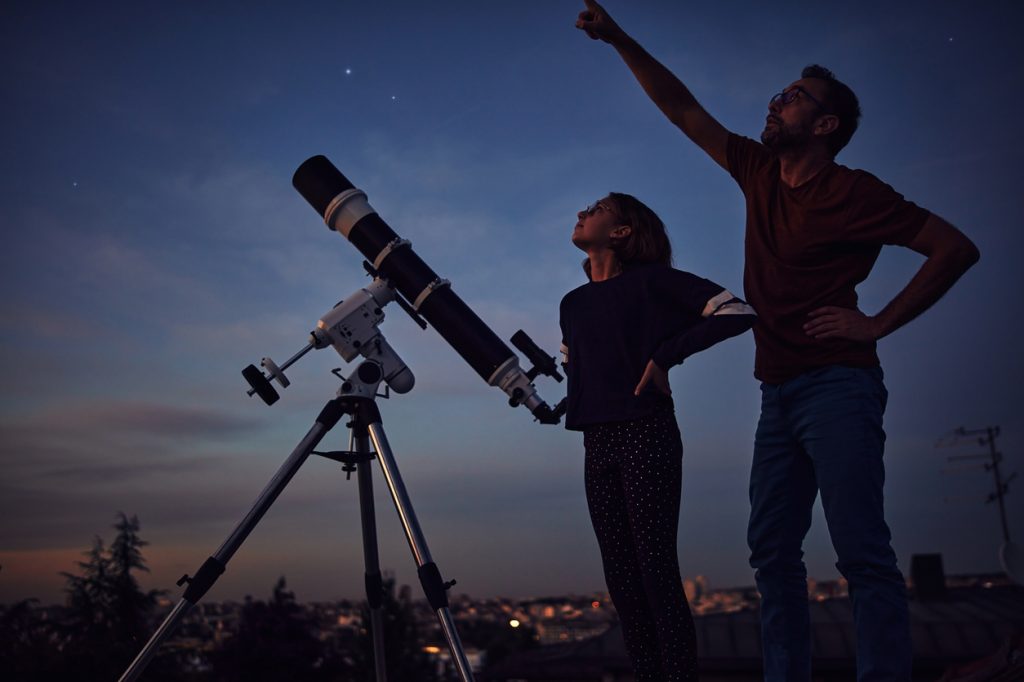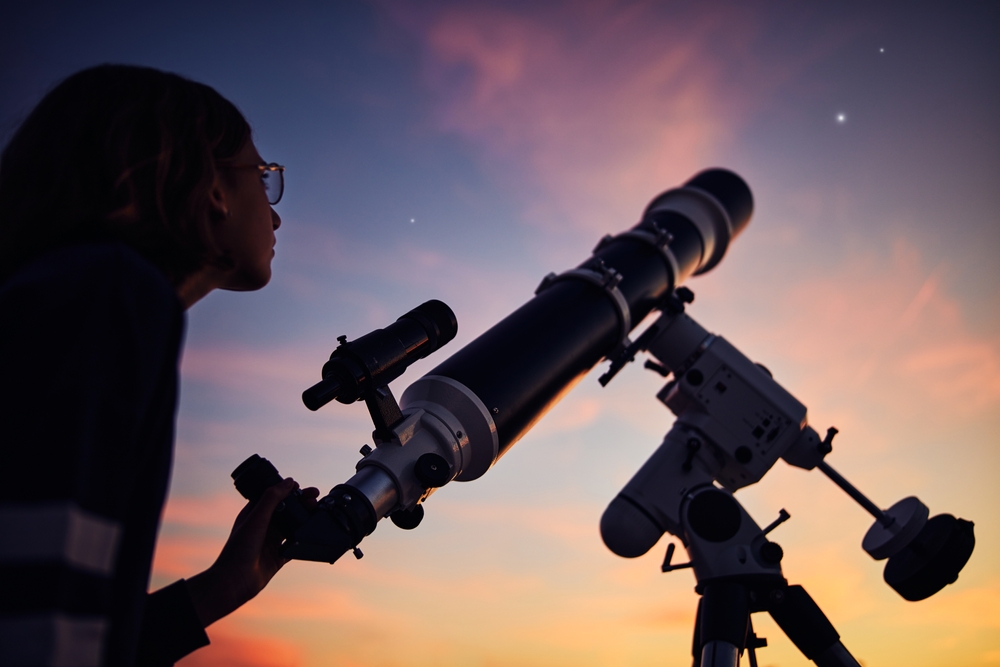New Green Comet Will Be Clearly Visible at Night—Here’s How to See It

Most significant astronomical events arrive with plenty of advance notice. The precise movement of our planet around the sun—and even many of the smaller objects within our solar system—makes it easy to plan ahead for a solar eclipse, a major meteor shower, or a special lunar event like a “supermoon.” But the vastness of the universe means that we can still sometimes get special surprises every so often. And now, scientists say a new green comet will soon be clearly visible in the night sky without a telescope. Read on to learn how you could spot it for yourself.
RELATED: 6 Stargazing Secrets, According to Astronomy Experts.
A recently discovered comet will soon pass by and become visible in the night sky.

Even though it might feel like we have our corner of the galaxy pretty well mapped out, new discoveries can quickly remind us that there are still plenty of surprises in the cosmos. The latest instance of this has been the discovery of Comet Nishimura, which is expected to potentially put on a show in the night sky, according to NASA.
Unlike other notable comets that have been on the books for centuries, this comet was only spotted for the first time around Aug. 10 when amateur astronomer Hideo Nishimura was photographing the night sky. The object—which is also known by the less-memorable name Comet C/2023 P1—has sprouted a green tail and is currently visible by telescope, per NASA. But its journey toward the sun is making it glow more brightly, meaning it could become visible to the naked eye by mid-September.
RELATED: A Special Solar Eclipse Will Create a “Ring of Fire” in the U.S.—Here’s How to See It.
There’s a chance the comet could fizzle out—but NASA is still optimistic it’ll put on a show.

Scientists have raced to learn more about the newly discovered comet as it hurtles toward the center of the solar system, having passed Earth’s orbit days ago and approaching Venus’s orbit by the weekend, according to astronomy website Earth Sky. But while its projected path close to the sun within Mercury’s orbit will make it more visible, the intense heat could also cause its nucleus to break up before we get a good view.
Despite the odds, NASA still believes the comet could soon be seen with the naked eye.
“Given the unpredictability of comets, no one can say for sure, but it currently seems like a good bet,” the space agency wrote in its blog post.
RELATED: 8 Amazing Things You Can See in the Night Sky Without a Telescope.
Even if it survives, this may also be the only time Earth will ever see the comet.

Despite bursting on the scene and keeping scientists on their toes about its ability to survive its upcoming solar fly-by, there is debate about whether this is a one-time visit for Comet Nishimura.
Unlike the vast majority of other familiar comets that originate from the Oort cloud, some argue that data on the object’s path show that it has a hyperbolic orbit, according to Forbes. This means it may be visiting from deep space and has too much energy to stay in our solar system for a return trip.
On the other hand, scientists at NASA speculate the comet could be more local in origin. However, this means it would also have a longer orbital period of a few hundred years or more—and still makes this the only opportunity to see it during this lifetime.
RELATED: For more up-to-date information, sign up for our daily newsletter.
Here’s how you can hopefully catch a glimpse of Comet Nishimura for yourself.

If all things go well, it should become easier to spot the comet over the coming weeks with a small telescope, according to Earth Sky. But if the object survives its close fly-by of the sun, it should become easily visible with binoculars during the early morning hours in early September. Scientists estimate it will become even brighter and visible with the naked eye beginning on the morning of Sept. 11.
The most ideal viewing will likely happen in the pre-dawn hours of Sept. 18, when the object reaches its perihelion—or its closest point to the sun. According to NASA’s blog post, this is because the object’s trajectory is angularly near our solar system’s star, shortening the window in which it’s visible.
If it survives, Comet Nishimura will then head back out toward the reaches of space after grazing our sun, becoming fainter through mid-October, according to Earth Sky. So, if you’re hoping to see it for yourself, set an early alarm and head outside before sunrise for this one shot at viewing this unique visitor.